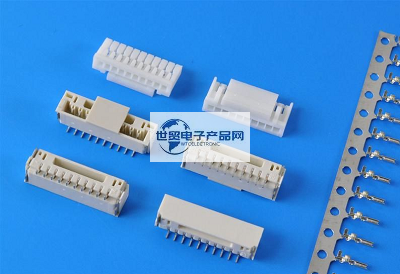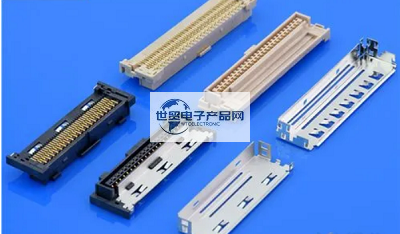Categorization:Product Information
Suzhou Huichengyuan Electronics Co., Ltd. is a well-known connector manufacturer with many years of industry experience. Here, I would like to share with you the three major technical performances of connectors and learn about the connector industry. Three technical properties of connectors: mechanical properties, environmental properties, and electrical properties. 1. Mechanical properties of the connector Plug-in and pull-out force is an important mechanical property. Plug-in and pull-out force is divided into insertion force and pull-out force (separation force). The requirements of the two are different. The maximum insertion force and minimum separation force are specified in the relevant standards, which indicates that the insertion force is small from the usage point of view (thus there is a structure with low insertion force LIF and no insertion force ZIF), while if the separation force is too small, it will affect the reliability of contact. Another important mechanical property is the mechanical life of the connector. Mechanical life is actually a durability index, which is called mechanical operation in the national standard GB5095. It takes one plug-in and one pull-out as a cycle, and is judged by whether the connector can normally complete its connection function (such as contact resistance value) after the specified plug-in and pull-out cycle. The insertion and removal force and mechanical life of the connector are related to the structure of the contact parts (positive pressure), the quality of the coating at the contact parts (sliding friction coefficient) and the dimensional accuracy of the contact parts arrangement.
------------------------------------------------------------------------------------------------------
2. Environmental performance of connectors Common environmental properties include temperature resistance, humidity resistance, salt spray resistance, vibration and impact resistance, etc. (1) Temperature resistance: At present, the maximum operating temperature of the connector is 260 °C (except for specific high-temperature special connectors), and the lowest temperature is-40 °C. When the connector is working, the current generates heat at the contact point, resulting in temperature rise, so it is generally believed that the operating temperature should be equal to the sum of the ambient temperature and the contact temperature rise. In some specifications, the maximum temperature rise allowed for the connector at the rated operating current is clearly specified. The general working environment temperature of Yangtze River connector products is-40 ℃ ~ + 105 ℃. (2) Moisture resistance: The intrusion of moisture will affect the insulation performance of the connector and corrode the metal parts. The constant humidity and heat test conditions are 90% ~ 95% relative humidity (up to 98% according to product specification), temperature + 40 ± 20 ℃, and the test time is at least 96 hours according to product specification. The alternating humidity and heat test is more rigorous. (3) Salt spray resistance: When the connector works in an environment containing moisture and salt, the surface treatment layer of its metal structural parts and contact parts may cause electrochemical corrosion, which will affect the physical and electrical properties of the connector. In order to evaluate the ability of electrical connectors to withstand such environments, a salt spray test is specified. It suspends the connector in a temperature-controlled test chamber, and sprays it out with compressed air with sodium chloride solution of specified concentration to form a salt spray atmosphere. The exposure time is specified by the product specification and is at least 48 hours. (4) Vibration and shock: Vibration and shock resistance is an important performance of electrical connectors, especially in special application environments such as aviation and aerospace, railway and road transportation. It is an important index to test the robustness of the mechanical structure of electrical connectors and the reliability of electrical contacts. There are clear provisions in the relevant test methods. The peak acceleration, duration and shock pulse waveform shall be specified in the impact test, as well as the time of interruption of electrical continuity. (5) Other environmental properties: According to the use requirements, other environmental properties of the electrical connector include sealing (air leakage, liquid pressure), liquid impregnation (resistance to bad habituation of specific liquids), low air pressure, etc. 3. Electrical properties of the connector The main electrical properties include contact resistance, insulation resistance and electrical strength. (1) Contact resistance: High-quality electrical connectors should have low and stable contact resistance. The contact resistance of the connector varies from a few milliohms to tens of milliohms. (2) Insulation resistance: an index to measure the insulation performance between contacts of electrical connectors and between contacts and shells, which ranges from hundreds of megohms to thousands of megohms. (3) Electrical strength (withstand voltage): characterizes the ability of connector contacts or between contacts and the housing to withstand the rated test voltage. (4) Other electrical properties: Electromagnetic interference leakage attenuation is to evaluate the electromagnetic interference shielding effect of the connector. Electromagnetic interference leakage attenuation is to evaluate the electromagnetic interference shielding effect of the connector. It is generally tested in the frequency range of 100MHz ~ 10GHz. For RF coaxial connectors, there are also electrical indicators such as characteristic impedance, insertion loss, reflection coefficient, and voltage standing wave ratio (VSWR). Due to the development of digital technology, in order to connect and transmit high-speed digital pulse signals, a new type of connector, namely high-speed signal connector, has appeared. Correspondingly, in terms of electrical performance, besides characteristic impedance, some new electrical indicators have also appeared, such as crosstalk, transmission delay, time lag, etc. In addition, different types of connectors have their own unique technical characteristics and difficulties, and connectors used in different industries have different requirements. In the future, new challenges will be posed to connector engineers and manufacturers. Generally speaking, the biggest technical difficulty of connectors at present is to ensure the reliability of products under the premise of miniaturization, but according to relevant industry experts, it will not pose a big threat to some large professional connector manufacturers.

---------------------------------------------------------------------------------------------------------------------------------------------------------------------------------------------------------------------------------------------------------------------------------------------------------- If you have related [connector wiring harness and cable products] purchasing/purchasing needs or want to purchase/understand which connector wiring harness and cable product solutions we can provide, please contact our business staff below; If you have related [Connector Wiring Harness Cable Products] sales/resources and promotion needs, please click "→ Business Cooperation ←" to negotiate with a dedicated person!